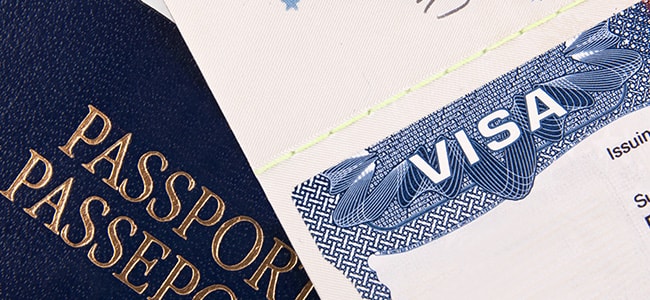Immigration Law Center

Immigration law is a complex area of law, which is why it is advisable to seek the guidance of an attorney who can help with your specific case. Every case is different, and the type of visa status or adjustment that an individual needs will depend on the circumstances of that person’s situation. The United States Citizen and Immigration Services (USCIS) is a division of the Department of Homeland Security (DHS), which overseas lawful immigration to the United States. The USCIS sets forth guidelines and criteria for each type of visa that can be used to gain entry into the United States.
Visas can generally be categorized in two ways: non-immigrant visas and immigrant visas. Non-immigrant visas are granted to people who wish to enter the United States for a short period of time with a specific purpose. Immigrant visas are issued to non-citizens seeking permanent residence in the U.S. Since immigrant visas allow individuals to permanently live and work in the U.S., the requirements are much more stringent and the time frame to obtain such a visa is also much longer than a non-immigrant visa.
The processing times for both non-immigrant and immigrant visas depend on a multitude of factors, including the type of visa that is being sought, what nationality the visa seeker is, the individual’s history in the U.S., and more. This is why the processing times are very difficult to estimate in a particular case.
Depending on the purpose of the trip, individuals can seek non-immigrant visas for travel purposes, for business purposes, as religious workers, as students, and more. Each of these visa types will require a set of specific documents in the application process. For example, if a person is seeking to enter the U.S. to partake in business activities, attend a conference, settle an estate, negotiate a contract, or purchase supplies or materials, that person should seek a B-1 business visitor visa. The individual seeking this type of visa must show, among other things, that he or she will not seek employment in the U.S., will not enroll in a course of study, and will return to his or her permanent residence outside the U.S. when the duration of the visa is completed.
There are also many different types of immigration visas, including those for immediate relatives of U.S. citizens, for the spouses of U.S. citizens, for unmarried minor children and stepchildren of U.S. citizens, and more. For example, the IR-1 is for a person legally married to a U.S. citizen. The U.S. citizen can petition for that foreign spouse to come and live in the U.S. as long as the petitioner is a U.S. citizen, the petitioner is legally married to the foreign national under the laws of the country in which the marriage took place, the petitioner can show the marriage is sincere, the petitioner makes enough money or has a co-sponsor who does, and the marriage was consummated prior to filing the visa petition, if the marriage was by proxy.
The examples above are only a few types of the numerous non-immigrant and immigrant visas available to individuals. Aside from that, there are many immigration issues that individuals may face relating to immigration law, including adjustment of status, concerns with specialized visas, and deportation issues.
